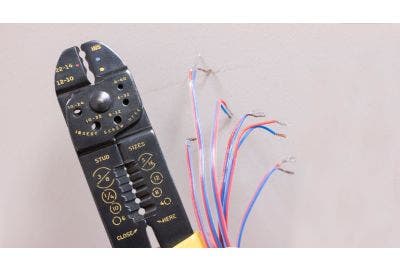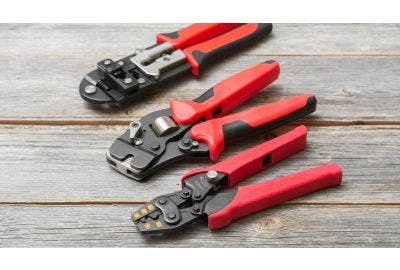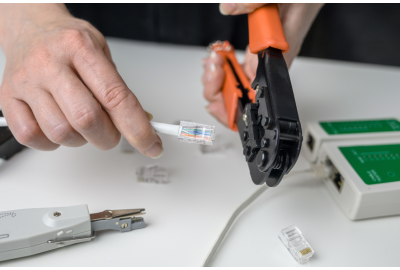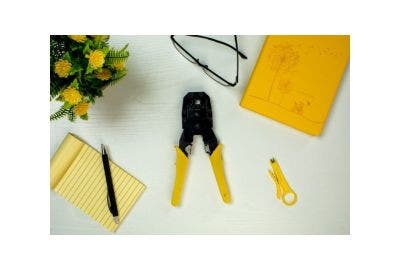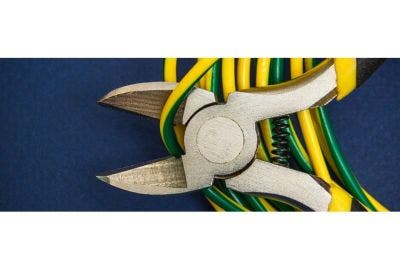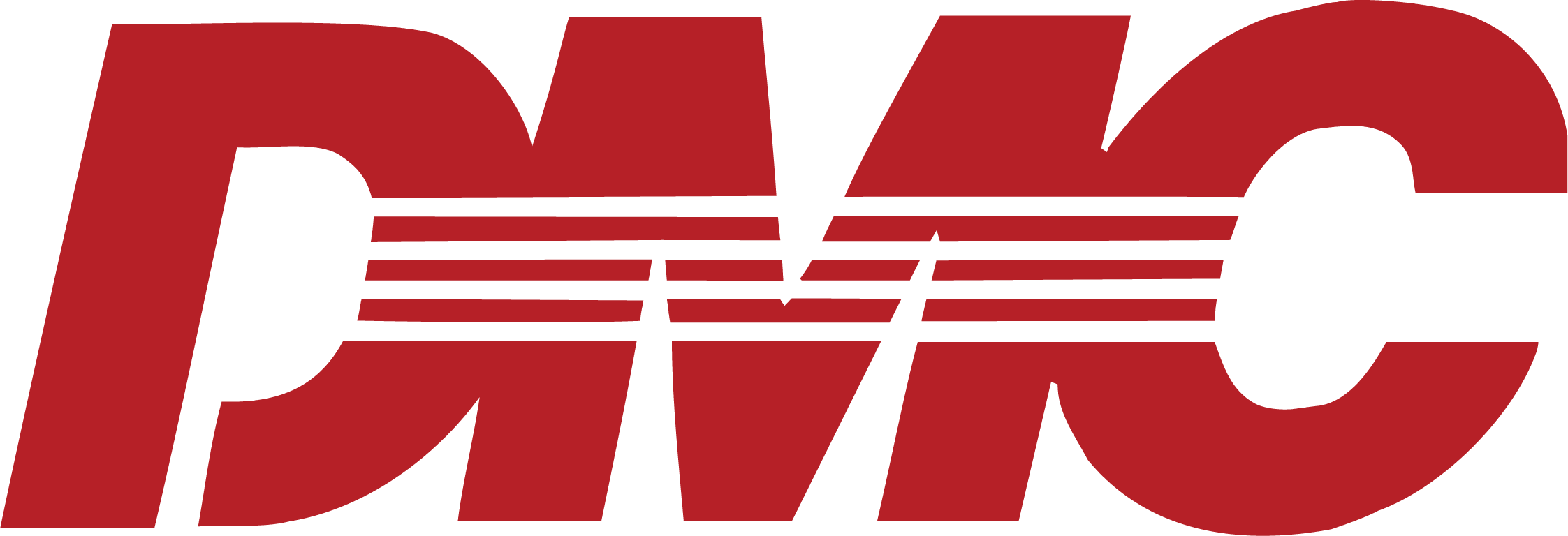Hydraulic cable cutters are indispensable tools across a wide range of industries, from construction and utilities to telecommunications. These powerful devices are engineered to cut through thick, heavy-duty cables that would be difficult or even impossible to manage with manual cutters.
Whether you're involved in large-scale infrastructure projects or routine maintenance tasks, selecting the right hydraulic cable cutter is key for improving both productivity and safety on the job.
In this guide, we’ll equip you with all the essential knowledge needed to make an informed purchase decision. We explain essentially what hydraulic cable cutters are and how they operate, before looking at the key features you should consider when choosing one. Additionally, we'll look at the different types of hydraulic cable cutters available on the market, and their various applications across industries, and offer practical advice on maintaining your tool to ensure its longevity.
Whether you're new to hydraulic cable cutters or looking to upgrade your equipment, this guide is designed to be your go-to resource for making the right choice.
Understanding Hydraulic Cable Cutters

What Are Hydraulic Cable Cutters?
Hydraulic cable cutters are specialised tools used to cut through thick, heavy-duty cable cutters that are commonly found in industrial settings. These cutters use hydraulic pressure to generate the force required to sever tough materials like copper, aluminium and steel-armoured cables. The hydraulic mechanism allows for a cleaner and more efficient cut compared to manual cable cutters, making them ideal for demanding tasks.
Hydraulic cable-cutting tools are particularly prevalent in industries such as construction, utilities and telecommunications, where strong and reliable tools are essential. These cutters are often used in scenarios where precision and power are required, such as in power distribution networks or large-scale construction projects.
Hydraulic cutting equipment can handle larger diameters and tougher materials with ease, providing a significant advantage in professional environments.
How Do They Work?
The basic principle behind hydraulic cable cutters involves using hydraulic fluid to create pressure that drives a cutting blade through a cable. When the hydraulic pump is activated, it forces the fluid into a cylinder, before pushing a piston. This piston, connected to the cutting blade, moves forward with immense force, slicing through the cable with precision. This mechanism allows the tool to exert far greater force than would be possible with manual or electric cutters, making it capable of handling the most challenging cutting tasks.
One of the significant advantages of hydraulic power is the smooth and controlled cutting action it provides. Unlike manual cutters, which can struggle with thick cables, hydraulic cable cutters maintain consistent pressure throughout the cut. This provides a clean and precise cut, reducing the risk of cable damage and improving safety during use.
For example, in a typical cutting process, a hydraulic cable cutter can easily sever a high-tension steel cable within seconds, a task that would be extremely difficult with other types of cutters. This efficiency and power make hydraulic cable cutters the preferred choice for professionals who require reliable and durable tools.
Key Features to Consider
Cutter Capacity
When selecting a hydraulic cable cutter, one of the main factors to consider is the cutter's capacity. Cutter capacity refers to the maximum diameter and type of cable that the tool can effectively cut. Choosing a cutter with the appropriate capacity is essential so that the tool can handle the cables you work with without compromising on performance or safety.
To determine the right capacity, first understand the size and material of the cables you typically work with. For example, a cutter with a capacity designed for aluminium or copper cables may not be suitable for steel-armoured cables, which require a more robust tool. Exceeding the cutter's capacity can lead to suboptimal performance and pose safety risks, such as blade damage or failure.
Different models offer a range of capacities, typically measured in millimetres or inches. Selecting a hydraulic cable cutter with the correct capacity for your specific needs provides efficient and safe operations.
Cutting Speed
Cutting speed is another important feature, especially in industrial applications where time is of the essence. The speed at which a hydraulic cable cutter can sever a cable affects overall productivity, particularly when dealing with large volumes of cables. Faster cutting speeds can significantly reduce job completion times, but it’s essential to consider the balance between speed and precision.
Different models of hydraulic cable cutters offer varying cutting speeds, often influenced by factors such as the thickness of the cable and the type of cutter. For instance, some models might provide rapid cutting for thinner cables but slow down when dealing with thicker, more robust cables. Additionally, a high-speed cutter might sacrifice some precision, so choose a model that aligns with your specific requirements.
For industrial applications where speed is a priority, selecting a model with a higher cutting speed can improve efficiency and reduce downtime.
Safety Features
Given the high forces involved, safety should always be a top priority when working with hydraulic cable cutters. Many models should be equipped with safety features such as safety locks, guards, and emergency shut-off mechanisms. These features help to protect the user from accidental injury during operation.
When choosing a hydraulic cable cutter, it's advised to look for models that include advanced safety features, particularly if you’ll be using the tool in high-risk environments. Additionally, the cutter should comply with industry safety standards and certifications, providing an extra layer of assurance regarding the tool’s safety and reliability.
Durability and Build Quality
The durability and build quality of a hydraulic cable cutter are crucial for long-term performance. High-quality materials such as hardened steel and corrosion-resistant alloys are commonly used in manufacturing these tools so they can withstand the demands of tough industrial environments. Features like reinforced handles and robust construction further improve durability.
When assessing the build quality, look for indicators such as the tool’s weight, the sturdiness of its components, and any additional protective features like weatherproofing. Investing in a durable, well-built cutter will help with a longer lifespan and reduce the likelihood of costly downtime due to tool failure.
Types of Hydraulic Cable Cutters

Manual Hydraulic Cable Cutters
Manual hydraulic cable cutters are designed for portability and ease of use. These cutters operate through a foot-pumped hydraulic mechanism, making them ideal for situations where mobility is essential, such as in remote locations or when working at height. While they are generally more straightforward and less expensive than powered models, they do have limitations in terms of cutting speed and the thickness of cables they can handle.
Manual cutters are best suited for jobs that require occasional cutting or when working with cables that aren't too thick. Their simplicity and reliability make them a popular choice for fieldwork, but for more demanding tasks, a powered alternative may be necessary.
Battery-Powered Hydraulic Cable Cutters
Battery-powered hydraulic cable cutters combine the power of hydraulics with the convenience of battery operation. These cutters are perfect for jobs that require frequent cutting but where access to a power source might be limited. The battery operation allows for greater mobility, making these cutters ideal for use in areas with difficult access to mains electricity.
These tools offer a balance between portability and power, making them suitable for a wide range of applications, from construction sites to utility maintenance. However, battery life and power output can vary between models, so you need to choose a cutter that meets your specific needs, particularly if you expect to perform high-volume cutting.
Electric Hydraulic Cable Cutters
Electric hydraulic cable cutters are the most powerful of the three types, designed for high-volume, continuous cutting tasks. These cutters are typically plugged into a power source, providing consistent and reliable power for cutting through the thickest and most durable cables. They are particularly well-suited for industrial environments where large quantities of cables need to be cut regularly.
While they offer the highest cutting power and speed, their reliance on an electric power source can be a limitation in some field applications. However, for factory settings or large-scale construction projects, electric hydraulic cable cutters provide the efficiency and durability needed to handle even the most demanding tasks.
Applications and Use Cases
Industrial Applications
Hydraulic cable cutters are indispensable in various industrial settings, where they are used to handle the heavy-duty cables often found in construction, manufacturing, and mining. These tools are essential for cutting through large, thick cables that connect machinery, distribute power, or support infrastructure. For example, in construction, hydraulic industrial cable cutters are used to cut rebar or large cables during the assembly of bridges, buildings and other structures.
In manufacturing environments, they make sure that machines and systems are connected with precision and safety. Making clean, accurate cuts reduces the risk of damaging expensive materials, resulting in an efficient and high standard of installation.
Utility and Power Distribution
In the utility and power distribution sectors, hydraulic cable cutters are vital in maintaining and installing power lines and underground cables. These tools are essential for cutting the thick, high-voltage cables used in power transmission and distribution networks. The ability to safely and efficiently cut through these cables is required for reliable power delivery and to minimise downtime during maintenance.
In addition to handling high-voltage cables, hydraulic cable cutters are used for cutting underground cables during installation or repair works. Given the safety risks associated with working on live cables, the precision and control offered by hydraulic cutters make them the preferred choice in these environments, where compliance with strict safety regulations is non-negotiable.
Telecommunications
Hydraulic cable cutters are also widely used in the telecommunications industry, particularly for cutting the heavy-duty cables that connect networks and transmit data. This includes fibre optic cables, coaxial cables, and other types of communication lines. In this industry, precision is critical, as even minor damage to a cable can result in significant data transmission losses or network failures.
Telecommunications technicians rely on hydraulic cable cutters for their ability to make clean cuts without compromising the integrity of the cables. This process is needed when working on high-capacity networks or in environments where cables need to be cut quickly and accurately, such as during the installation of new communication infrastructure or the maintenance of existing networks.
Maintenance and Care
Regular Inspections
Regular inspections are essential for the longevity and safe operation of hydraulic cable cutters.
Before each use, it's advised to check the tool for any signs of wear and tear, such as damaged blades, leaks in the hydraulic system, or worn seals. Inspecting the hydraulic fluid levels is also crucial, as low fluid can impair the cutter's performance and lead to damage.
Regular inspections help identify potential issues before they become serious problems, reducing the risk of tool failure during critical tasks. Neglecting these checks can lead to unsafe operating conditions and costly repairs down the line.
Proper Storage
Proper storage of hydraulic cable cutters is key to maintaining their condition and they are ready for use when needed. Store the cutters in a dry, temperature-controlled environment to prevent rust and corrosion. It's advisable to keep them in a protective case or on a secure rack where they won’t be exposed to dust, moisture, or accidental impacts.
Improper storage can lead to damage that might not be immediately visible but could affect the tool’s performance over time. For those working in environments with harsh conditions, investing in storage solutions designed to protect your tools is highly recommended.
Lubrication and Cleaning
To ensure smooth operation of hydraulic cable cutters, it is important to keep on top of maintenance.
Regularly lubricate moving parts, particularly the blades and hydraulic components, to reduce friction and wear. Use manufacturer-recommended lubricants and follow the instructions for application to avoid over-lubrication, which can attract dirt and debris.
Cleaning the tool after each use is best for continued use. Wipe down the cutters with a clean, dry cloth to remove any dust, grease, or cable fragments that could affect performance. For more thorough cleaning, refer to the manufacturer's guidelines, and use appropriate cleaning products that won’t damage the tool.
Choosing the right hydraulic cable cutter is essential for providing efficiency, safety, and long-term performance in your work.
By carefully evaluating your needs and considering the factors discussed, you can select a tool that not only meets your immediate requirements but also provides lasting value.
For those ready to make a purchase, consider exploring reputable suppliers like Heamar for high-quality, reliable options. Remember, investing in the right tool now can save you time, money and effort in the future.



